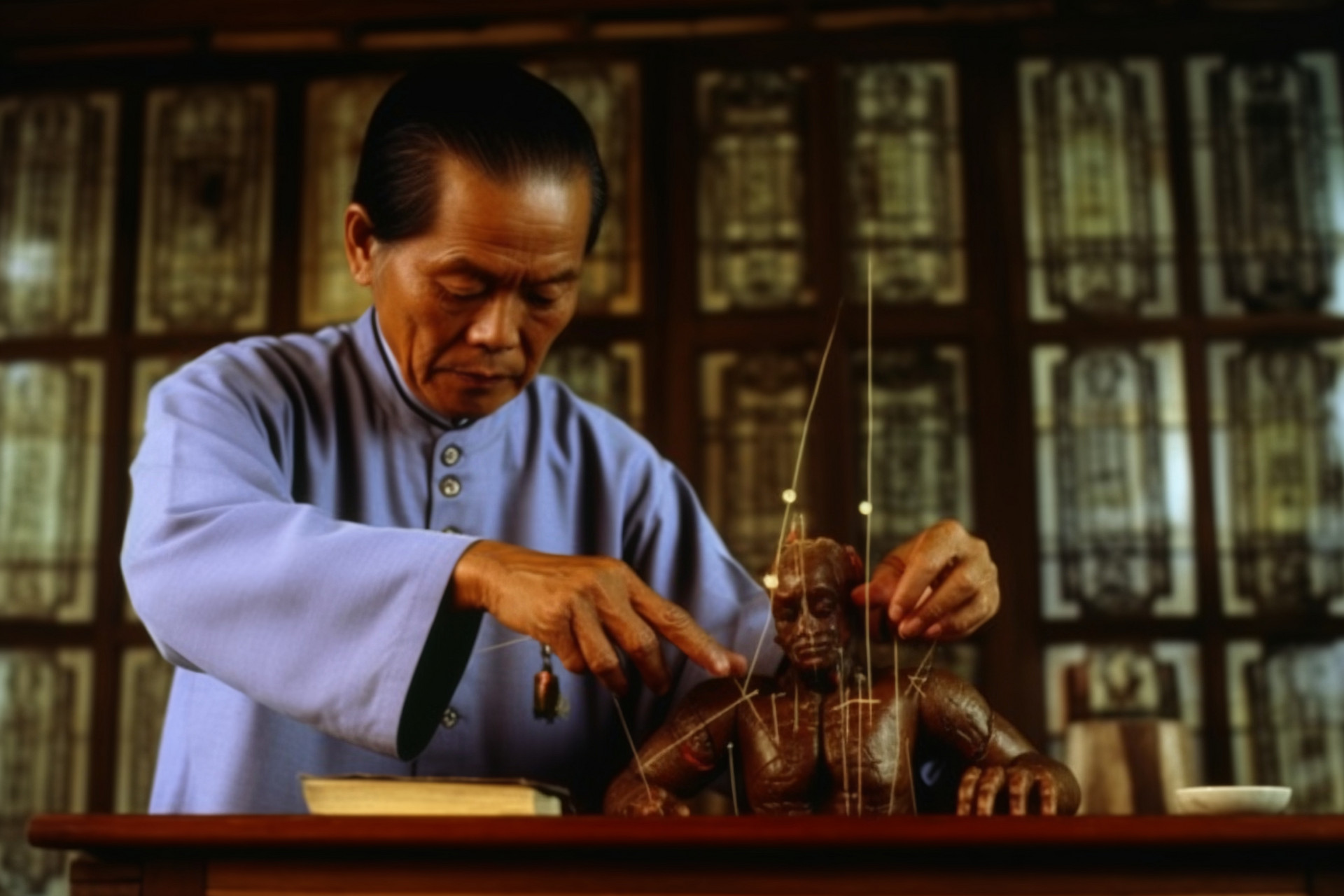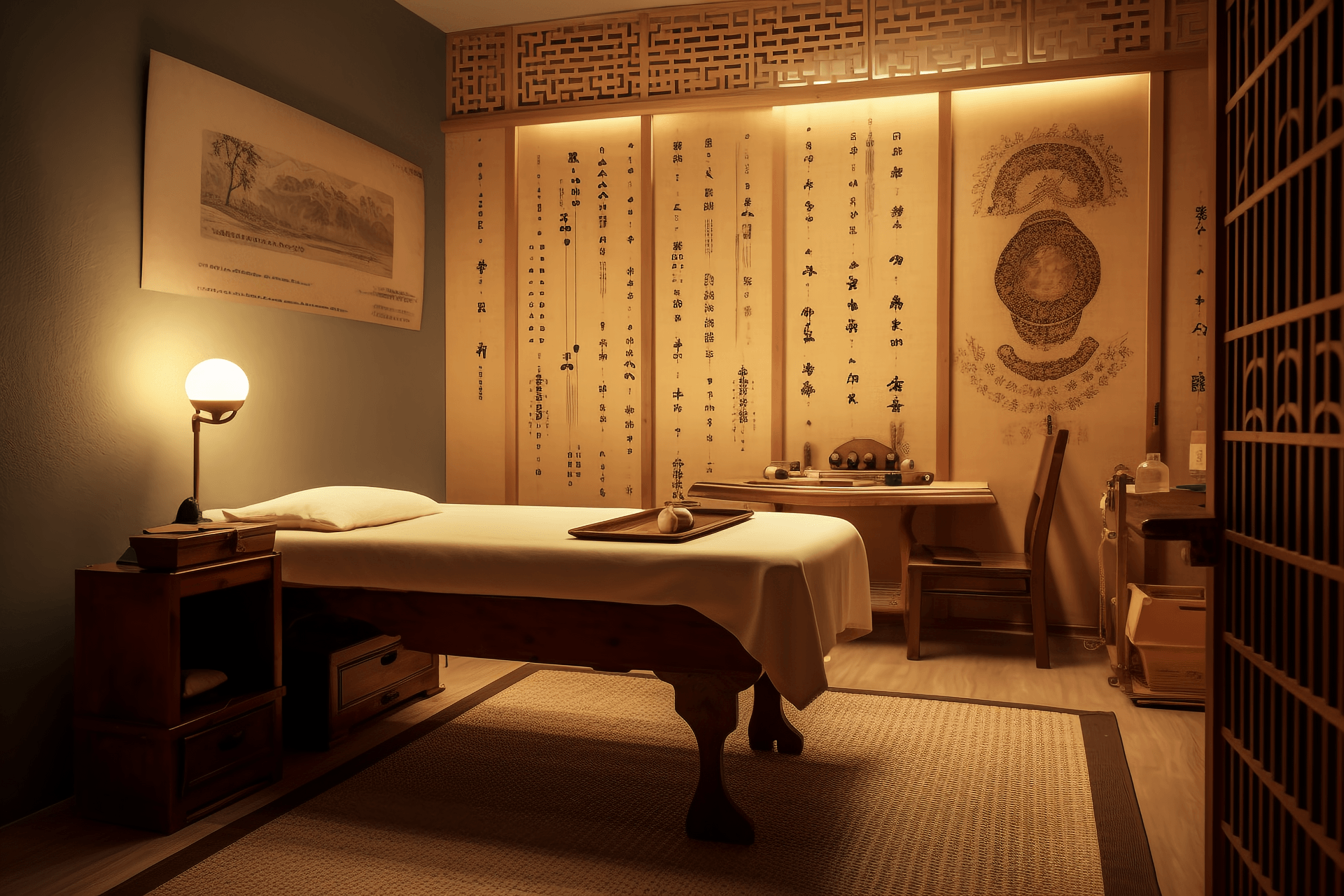Moxibustion with a barrier, also known as indirect moxibustion, is a method of applying moxibustion by placing a certain object between the moxa and the skin. This method was first mentioned in Ge Hong's "Emergency Prescriptions Kept Up One's Sleeve" in the Jin Dynasty. Ge Hong developed various types of barrier moxibustion, such as using salt as a barrier for treating cholera by placing it in the navel and applying moxibustion twice a day; using garlic as a barrier for treating swelling by cutting a garlic clove in half, placing it on the swollen area, and applying moxibustion until the garlic turns black; and using chili pepper as a barrier for treating severe pain and swelling caused by toxins. In later generations, there were further developments based on these methods, such as using ginger as a barrier for treating anal prolapse and bloody diarrhea by placing ginger slices on the acupoints and applying moxibustion thirty times; using Croton tiglium to make a paste, filling the navel with it, and applying moxibustion three times for treating abdominal accumulations, constipation, and various heart diseases; using powdered croton seeds mixed with dough to apply on the navel and lower abdomen for treating constipation, as described in "Compendium of Materia Medica"; and using various methods such as black soybean paste barrier moxibustion for treating back abscesses, aconite barrier moxibustion for treating non-healing wounds, and so on. There are more than forty types of barrier moxibustion mentioned in medical books throughout history, including blanket moxibustion, onion barrier moxibustion, Aconitum barrier moxibustion, Rheum palmatum biscuit barrier moxibustion, Sichuan pepper barrier moxibustion, Atractylodes macrocephala biscuit barrier moxibustion, saffron biscuit barrier moxibustion, castor seed barrier moxibustion, alum barrier moxibustion, herbal biscuit barrier moxibustion, walnut shell barrier moxibustion, yellow clay barrier moxibustion, garlic chive barrier moxibustion, dough biscuit barrier moxibustion, silkworm pupa barrier moxibustion, Croton tiglium biscuit barrier moxibustion, Lepidium apetalum biscuit barrier moxibustion, soap nut barrier moxibustion, toad barrier moxibustion, Chinese chive barrier moxibustion, peach leaf barrier moxibustion, Datura metel root barrier moxibustion, Trichosanthes kirilowii root barrier moxibustion, bitter melon barrier moxibustion, betel nut barrier moxibustion, earthworm mud barrier moxibustion, chicken egg barrier moxibustion, soybean paste barrier moxibustion, paper barrier moxibustion, and Ephedra barrier moxibustion. Many of these barrier moxibustion methods are still being used in clinical practice today, and we will provide a detailed introduction in the following sections.
 Figure: Barrier Moxibustion
Figure: Barrier Moxibustion
Barrier moxibustion with moxa is popular among patients because it is mild and does not easily cause damage to the skin. It is worth mentioning that for a long time, people believed that the objects used as barriers were mostly Chinese herbs, and they were based on the therapeutic effects when taken internally. Therefore, when applying barrier moxibustion, not only the therapeutic effects of moxibustion are exerted, but also the functions of the herbs are considered, resulting in good effects for many diseases. In recent years, some acupuncture and moxibustion practitioners have conducted in-depth research on this. For example, using pyrolysis gas chromatography (PGC) to compare the components of the original barrier materials and the components precipitated at the bottom of the barrier after moxibustion, it was found that no related Chinese medicine components were detected throughout the moxibustion process with herbal biscuit barriers, while the components precipitated during ginger barrier moxibustion and garlic barrier moxibustion were the same as the main components of ginger and garlic, and they changed correspondingly with the increase in moxibustion. This indicates that the precipitated components of fresh barrier materials such as ginger and garlic may be the basis for the therapeutic effects of moxibustion, while herbal biscuit moxibustion may have other mechanisms. Of course, these are only preliminary results, and the exact mechanism needs further exploration.











